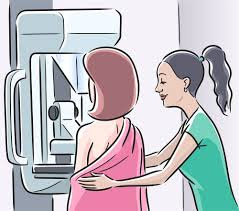Men, Milk Ducts, Mammograms, and Mastectomies?!?
How to detect possible breast cancer symptoms in MEN, and important signs to NOT disregard as arthritis, weight gain, age, and liver spots.
(Like we didn’t have enough to worry about with colon and prostate cancer)
Okay, I think most of America has seen Meet the Parents, and probably laughed when Jack made the comment to Greg,
“Well, I have nipples, can you milk me?” 1
The statement was funny because Greg was not only caught in a lie about milking cats on a farm, but the pun was the sarcastic question Jack posed to the male nurse. Basically, I am a male, I have nipples, I know you’re lying, and I’m going to humiliate you by asking a question EVERYONE knows the answer to Can you milk me?
The audience chuckles at the awkward question posed by the very blunt and judgmental Jack, and laughed aloud at the obvious embarrassment clouding the face of Greg, who mentally awarded Jack with a “Check Mate, Jerk!’
Enough about Hollywood, but as a man with no medical expertise, it was the first thing that popped in my mind as being somewhat relatable to the breast cancer symptoms I am about to describe.
Men, don’t fret! No one will be milking you anytime soon! That’s the light side of what I’m getting to lay on you. Did you know that breast cancer symptoms in men often include tumors around the nipples, and sometimes nipple drainage? Yes, our nipples can discolor, pucker, invert, and omit a discharge, most often resembling the color of breast milk.
I was even more shocked that another breast cancer symptom could possibly result in a condition called gynecomastias, or “Man Boobs. “As I have gotten older, I myself have acquired a small set of these. Until doing a minimal search on the web, I chalked my growth up as gaining weight, and simply joke that at least I have a set to play with when the misses tells me “NO!”.
I was partly correct in one of my assumptions, that men will deposit fat around the chest area, often when gaining weight. I was unaware of an underlying breast cancer symptom: elevated ESTROGEN! Yes men, as much testosterone as we produce, it is a medical fact that 85% of male breast cancer patients have elevated estrogen, which is a receptor to cancer cells. In addition, our fat cells can turn the male hormone androgen into the female hormone estrogen!
So simply stating, being obese could possibly make you more susceptible to breast cancer by pumping estrogen into our bodies, which as I just described, bonds very easily with cancer cells. Now, please be advised that most cases of gynecomastia are related to hormone levels during puberty to the age of 30, and does not mean you have breast cancer! If you or someone in your family suffers from hormone imbalance, I do recommend following up with a physician to check estrogen levels that are so easily joined with cancer cells.
Breast cancer symptoms, especially for men, may not be easily detectable. Nipple and chest pain and/or tenderness or swelling often occurs, accompanied by discoloration and change of nipple shape. The nipple may invert, or pucker and a bump may present.
Because men are usually unaware of potential cancer in their breast and overlook symptoms, studies have found that men diagnosed with breast cancer stood a higher chance of cancer metastasizing, or spreading to other parts of the body. A simple bump in or around a man’s chest is a breast cancer symptom that is very easy to dismiss and can be fatal. If the tumor grows, the likelihood that other systems in our bodies can be affected, and cancer can spread.
Men, once again, I am not a doctor. I’m not saying that every little bump, change in size, or color of our “pecs”, (I prefer to still call my chest area as pecs, not “breast tissue/muscle”) means run to your physician to be checked for cancer. This article is a very basic explanation of some causes of breast cancer and possible indicators to look for when determining reasons for abnormalities that might, to most men, be easily overlooked.
As always, discuss any questions and concerns with your physician, no matter how silly they may seem to be. Also, if you are unaware of your family’s medical history, try to get some information relating to diagnosis and treatment of any medical condition. Obtaining this information can assist your practitioner in determining tests to administer that may help in early detection of conditions that genetically, you may or may not, have had passed down to you. Some of the tests include the office breast exam, mammograms, and biopsies. If detected early, the male breast cancer survival rate is relatively high when treated in early stages. Your specialist will provide very detailed testing and treatment options.
Remember; don’t be afraid to ask your doctor any question! They are there to diagnose, treat, and educate patients, and there’s never a silly question when it pertains to your health!
























